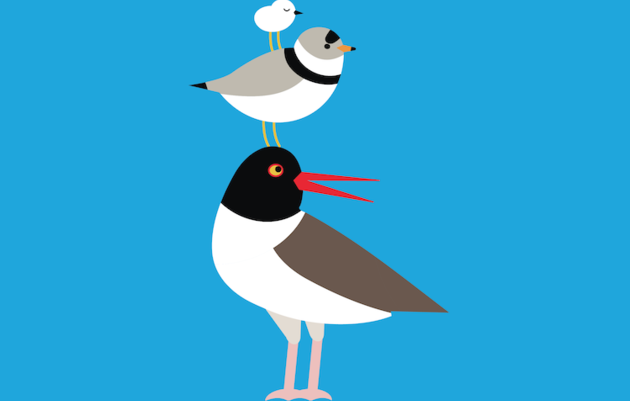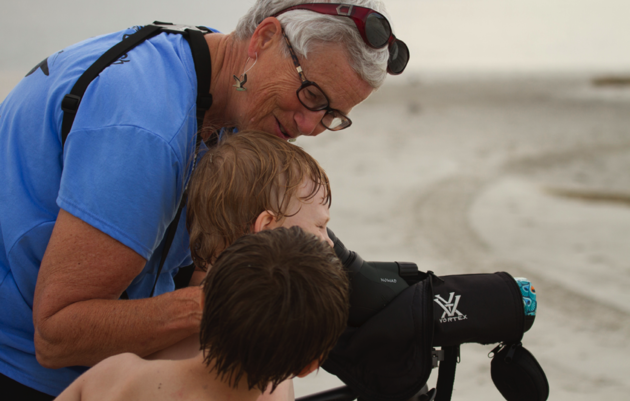While many of us are hunkered down at home, birds are returning from long migration journeys to nest on North Carolina’s beaches. These species—sensitive and threatened birds like Black Skimmers and Least Terns—depend on nesting sites that are protected by posted signs installed by Audubon North Carolina and our Beach Bird Steward volunteers.
Before North Carolina’s stay-home order, Audubon staff posted nesting areas stretching from Pamlico Sound to the Wilmington area. Our beach steward program is currently suspended to allow volunteers to stay healthy at home, while our biologists are able to safely go out at times to monitor bird colonies by themselves.
Some nesting sites may have fewer people this season due to restrictions on beach access, but the birds are still sensititve to any disturbance. If you do go to an open beach or island, please remember to respect posted nesting areas and keep dogs and people at a safe distance from birds. Remember we need to share our shores.
You can help get the word out using our new #ShareTheShore digital toolkit, and by signing and sharing out Good Egg Pledge to protect vulnerable birds.
For many of coastal North Carolina’s most iconic species, the beach is their only home. Individual birds often return to the same beach to rear chicks year after year. That means the American Oystercatcher you might see feeding chicks at the sanctuary at the south end of Wrightsville Beach one year will likely be there again the following summer.
The posted nesting areas protected and managed by Audubon ensure the survival of 40 percent of the state’s coastal nesting birds. At Lea-Hutaff Island, Audubon’s posted nesting site was home to more than 1,000 pairs of Least Terns last year—the largest Least Tern colony recorded in the state in at least 40 years.
Audubon and 65 of our Beach Bird Stewards monitor the bird sanctuary at the south end of Wrightsville Beach. Audubon’s Lower Cape Fear River island sanctuaries are home to the largest concentration of nesting waterbirds in the state, including more than 10,000 nesting pairs of White Ibis.








